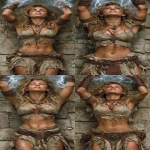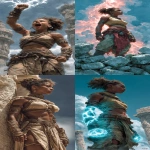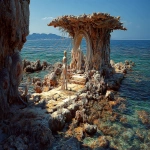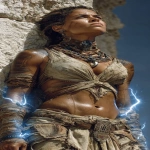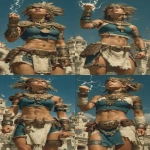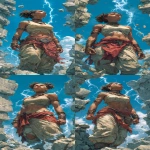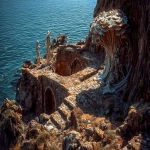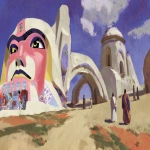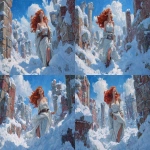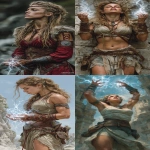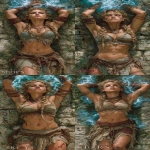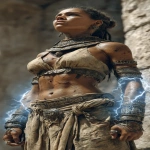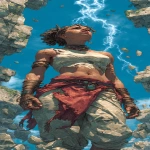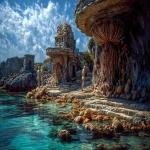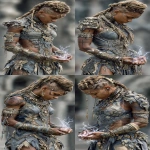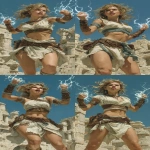Explore the Best AI Image Gallery

Pixels From Within: Exploring the Impact of AI-Generated Images on Art
The artistic landscape is undergoing a seismic shift with the advent of artificial intelligence (AI) capable of generating stunningly realistic images. This technology, once confined to science fiction, is now readily accessible, blurring the lines between human and machine creativity. But what does this mean for the future of art? How will AI-generated images impact artists, collectors, and the very definition of art itself?
A New Canvas: Potential Uses of AI-Generated Art
AI-generated imagery opens a Pandoras Box of possibilities across various creative domains:
- Concept Development and Visualization: Artists can leverage AI to rapidly explore different visual concepts, experiment with compositions, and translate abstract ideas into tangible forms.
- Personalized Artwork: Imagine commissioning a unique piece tailored to your preferences, where AI algorithms capture your style and vision.
- Marketing and Advertising: Brands can utilize AI to create captivating visuals for campaigns, product mockups, and immersive experiences.
- Education and Research: Students and researchers can explore artistic styles, historical periods, and the technical aspects of image creation through interactive AI tools.
The Ethical Tightrope: Navigating the Challenges
While the potential benefits are vast, AI-generated art raises several ethical concerns:
- Authorship and Ownership: Who owns the copyright to AI-generated art – the programmer, the user who provides input, or the AI itself? This question demands legal and philosophical clarity.
- Bias and Representation: AI algorithms are trained on existing data, which may perpetuate societal biases and stereotypes. Its crucial to ensure that AI-generated art reflects diverse perspectives and avoids harmful representations.
- Job Displacement: The automation of creative tasks by AI could impact the livelihoods of artists and designers. Its essential to consider the social and economic implications and explore ways to mitigate potential job losses.
The Future is Fluid: Trends Shaping the Landscape
The field of AI-generated art is constantly evolving, driven by rapid technological advancements:
- Increased Realism and Detail: AI models are becoming increasingly sophisticated, capable of generating images with astonishing realism and intricate details.
- Generative Adversarial Networks (GANs): These powerful algorithms pit two neural networks against each other, constantly refining and improving the quality of generated images.
- Style Transfer and Artistic Interpretation: AI can now transfer the style of one artwork onto another, allowing for unique artistic interpretations and collaborations between humans and machines.
- Interactive and Personalized Art Experiences: Imagine art that responds to your emotions, movements, or even thoughts – AI is paving the way for immersive and personalized artistic encounters.
The integration of AI into the creative process presents both opportunities and challenges. By embracing ethical considerations, fostering collaboration between humans and machines, and exploring the boundless potential of this technology, we can shape a future where AI-generated art enriches our lives, expands our understanding of creativity, and pushes the boundaries of human imagination.


](https://images.ai-img.art/thumbnails/150/39c6bd41a1282b304a06fb11053bd009750b3879060719b1adb959228dbcd41a.webp)


](https://images.ai-img.art/thumbnails/150/bc5b40f43007c984885fc5b035e0fd81d75554a8730895e067565a6b7050524b.webp)

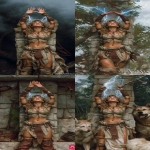
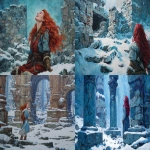

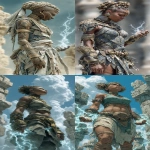
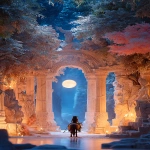
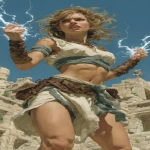
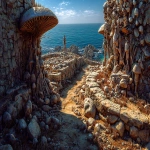
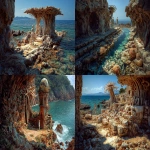
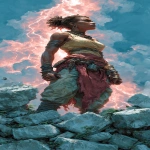
](https://images.ai-img.art/thumbnails/150/33a7122c923d87ba243a3afa0b16a930f1603be27b8ac938ff7f4ae4f5140553.webp)
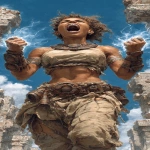

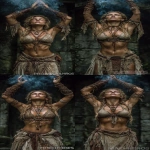
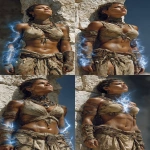


](https://images.ai-img.art/thumbnails/150/8aa2589b60ffe3dde30a265a6cac8d4ae71901c658ca48c4344f21436de413fb.webp)
](https://images.ai-img.art/thumbnails/150/00df9b84a8818b4130bce9ca10c0c67ff2bc8952ca0fb5012dafc9b1c6378e67.webp)
